The winning student ideas of the latest Timber in the City competition
By Justine Testado|
Friday, Aug 12, 2016

Related
Although summer is still in session for many architecture students, they're working just as hard. More than 850 students showed off their wooden design skills in the 2015-2016 Timber in the City: Urban Habitats competition, which was co-organized by the Association of Collegiate Schools of Architecture (ACSA), the Binational Softwood Lumber Council (BSLC) and Parsons The New School for Design.
Participants were challenged to design a mid-rise, mixed-use complex in Manhattan's Lower East side that includes affordable housing units as well as a NYC outpost of the Andy Warhol Museum, and a new expanded home for the historic Essex Street Market. Their designs had to integrate wood construction systems and various wood technologies. The leading jury panel of architects and professors awarded $40,000 total in prize money to the winners, who mostly hailed from universities in the Pacific Northwest region of the U.S. Two honorable mentions were also announced.
The projects will be on display during the 2016 Greenbuild Conference in Los Angeles this October, followed by the 2017 ACSA Annual Meeting in Detroit in March, and the Orlando-based American Institute of Architects 2017 Convention in April.
Check them out below.
1ST PLACE: Stack Exchange by Buddy Burkhalter, Mingjun Yin, and Connor Irick | University of Washington
Faculty sponsors: Richard Mohler and Elizabeth Golden | University of Washington
RELATED COMPETITION 2015-2016 Timber in the City

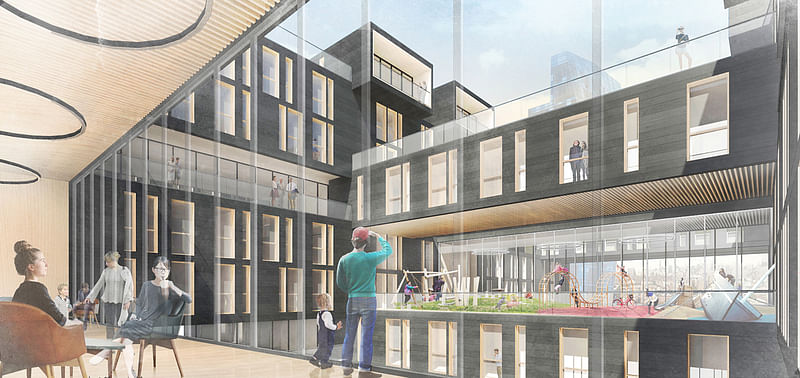
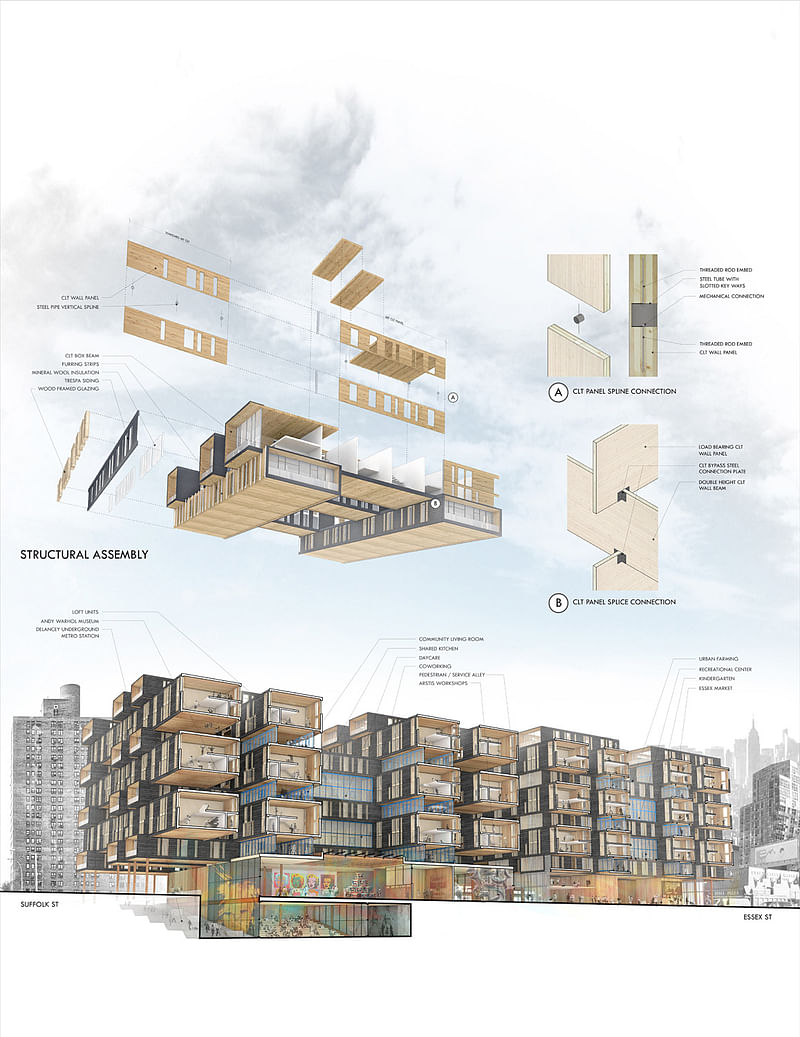
Project excerpt: “Stack Exchange celebrates the vitality and multidimensional community of the Lower East Side by referencing historical building tradition and urban context, integrating with transportation infrastructure, and advancing mass timber construction. By stacking housing similar to the lumber drying process, voids are created to allow for daylight, ventilation, and private and semiprivate amenity spaces. By connecting to the Williamsburg Bridge, Delancey Underground, and the subway, neighborhood residents and visitors from other boroughs are encouraged to engage with the site, Essex Street Market, and Andy Warhol Museum. Massing is comprised of stacked bars with voids between. Areas of double- and triple- height spaces contain the public program on ground floor. The expanded Essex Street Market is located on the western block where flexible market stalls are surrounded by permanent vendors. Half of the market is unconditioned and serves as a through block connection to the pedestrian-oriented Norfolk Street. The Andy Warhol Museum is on the eastern block and connects to the subway through a public gallery. A larger scale ground floor condition along the car-dominant Delancey Street reinforces pedestrian movement on other edges of the site. Housing levels above are organized in two typical floor plans depending on unit type.”
Jury comments: “This winning submission is outstanding for its inventive formal strategy and expressive use of timber. The concept of stacking volumes with core atria dropping down is very nice, creating a lot of visual depth and variation not typically found in New York City. The scale of the market and gallery spaces read as great urban rooms with the residential spaces floating above. The contrast of the dark wood exterior and the warm, glowing interior also add to the aesthetic interest of the building. The project takes advantage of mass timber and its natural partnership with modular construction, which pairs well with the project’s massing. The story of constructability presented through the diagrams is believable and there is a clarity to the structural assembly and delivery methods. Although the parti of stacked volumes is appealing, it would have acoustical issues and thermal implications from the extraneous surface area. Another technical issue is that the CLT is loaded on its weak axis. Lastly, this team was progressive in their approach to the program. There integration of communal residential spaces and areas for urban farming is great, and it is nice to see built-in, systematic environmental strategies.”
2ND PLACE: Hybrid Domains by Greg Stacy, Benjamin Wright, Alex Kendle, and Michael Meer | University of Oregon
Faculty sponsors: Judith Sheine | University of Oregon; Mikhail Gershfeld | Cal Poly Pomona; Mark Donofrio | University of Oregon
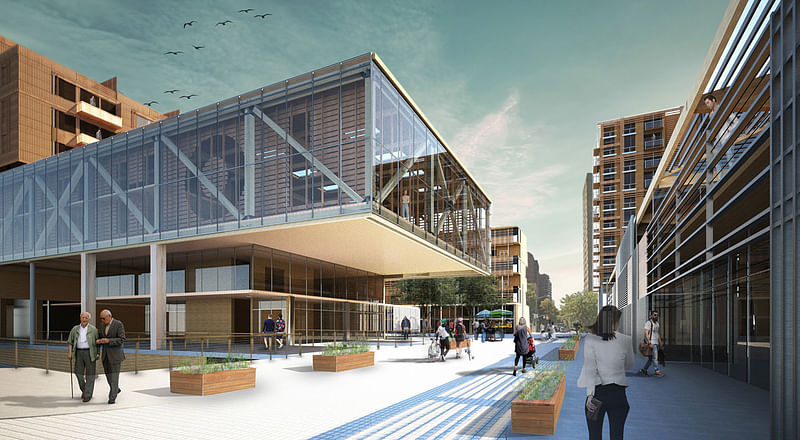

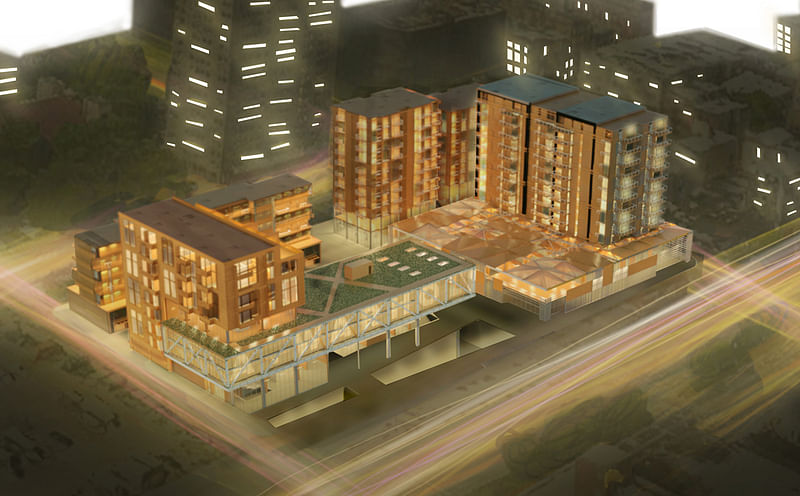
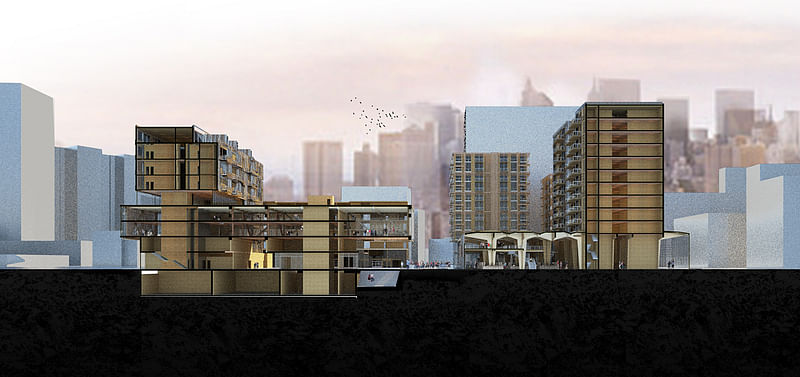
Project excerpt: “One of the most iconic cities of the modern world, New York, is a collage of urban fabric, cultures, and infrastructure. The city is not beautiful because of its various individual pieces, but because of their intersections that combine into unique Hybrid Domains. There is no greater example of this hybridization than the Lower East Side. Rich with cultural history, architectural palimpsest, and layers of development, this neighborhood is fighting the pressures of a fast growing city. Therefore, it is in need of a solution that allows for both growth and a celebration of its character. Hybrid Domains does both of these by embracing new and innovative architectural design, while celebrating the neighborhood's rich collage of history. Hybrid Domains responds to the surrounding context with its complex program and its revival of heavy timber construction through hybridization.”
Jury comments: “This winning submission stands out for its elegant hybridity of systems. There is a nice expression of different structural types designed for different programs. The Warhol museum is especially well done with the super-graphic and large trusses creating a great lofty space, which is very Warhol. There is a nice nod to the old 19th century steel and iron loft buildings but reincarnated with timber. Overall, the visibility of the structure is good, and it is clear that the structure informs the architecture. The housing piece of the program could use further work; it feels underdeveloped, conventional, and insufficiently dense for New York City. The façade of the housing is a little off in scale and a little too open for the site. The exposed wood louvers offer performance, however the submission is missing information on how the exterior wood would be protected.”
3RD PLACE: Grid + Grain by Everardo Lopez, Lauren McWhorter, and Jesce Walz | University of Washington
Faculty sponsors: Richard Mohler and Elizabeth Golden | University of Washington


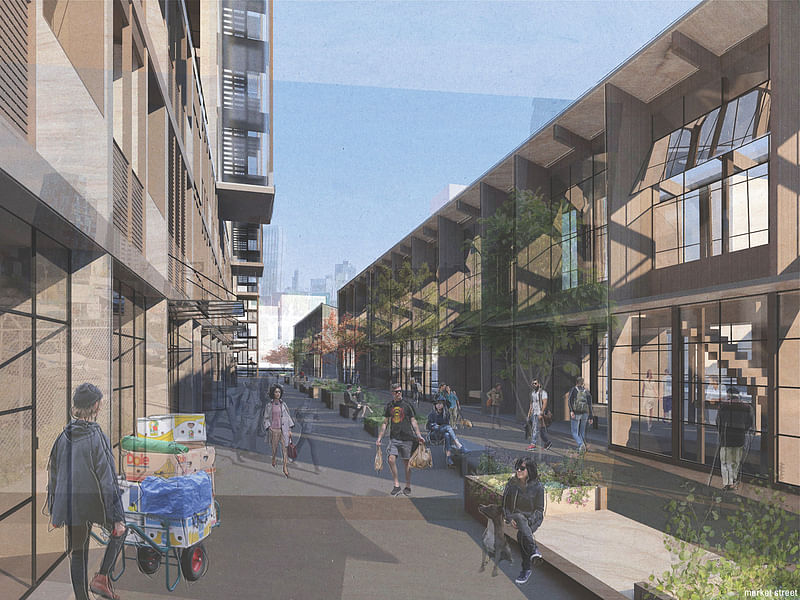
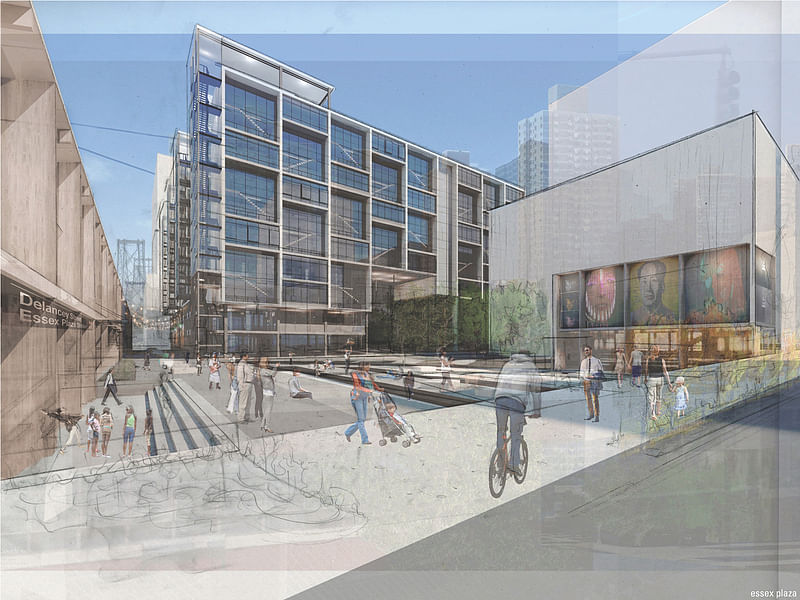
Project excerpt: “Assembling a Neighborhood GRID + GRAIN is a neighborhood of streets, alleys, and urban spaces that welcomes people and builds community at multiple scales. It unites the dense urban fabric of the Lower East Side to the north with the massive residential blocks to the south...The program organization defines east-west corridors of public activity, using existing street edges and creating new paths between buildings. Delancey Street defines a strong edge along the north side of the site. The market reinforces this axis and acts both as a gateway and a boundary. Live-work units frame the opposite side of Market Street, encouraging exchange between visitors, residents, and merchants. Parallel to Market Street is The Yard, an outdoor space for residents framed by family-oriented housing on both sides and flanked by towers above. On the quieter southern edge of the site, Broome Street is defined by two- and three-bedroom townhouses: a contemporary interpretation of urban vernacular, with stoops opening onto the street. Elevating the Street The upper and lower blocks intersect to form rooftop terraces and community recreation spaces that provide opportunities for gathering among residents.”
Jury comments: “This winning submission is a very exciting and convincing urban strategy. The diagram for this project in plan and section is extremely elegant and works well. It is a project that you could see being build in New York City. The plaza created on Essex St. has a grand urban gesture to the larger street, and the market along Delancy St. is a nice buffer to the living spaces that lie behind. This scheme allows for a pedestrian way to be created – a much desired projected area. The museum volume is well developed and it celebrates the existing four-story building on Essex St. This team clearly gave a lot of attention to transportation on the site. There is a nice sequence from the subway to the proposed LowLine to the building. The vertical circulation from the underground all the way up to the housing is thought through and this shows in section. The section has a lot of breathing room and opportunity for southern light to enter. In fact, throughout the project there is serious consideration to sunlight, and we wish that other environmental systems received the same attention. The submission is lacking in its use of wood. The tectonic language is convincing that it could be wood, but the representation and narrative could have addressed the technical solutions of timber more.”
Don't forget to check out the honorable mentions in the image gallery below. You can see all the entries in their entirety here.
Jury:
- Jennifer Cover, WoodWorks
- Dana Getman, SHoP Architects
- Susan Jones, atelierjones
- Alan Organschi , Gray Organschi Architect
- Jeff Spiritos, Spiritos Properties

RELATED NEWS Winners of the Timber in the City: Urban Habitats Competition

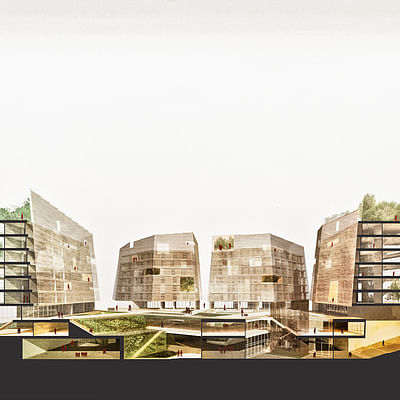


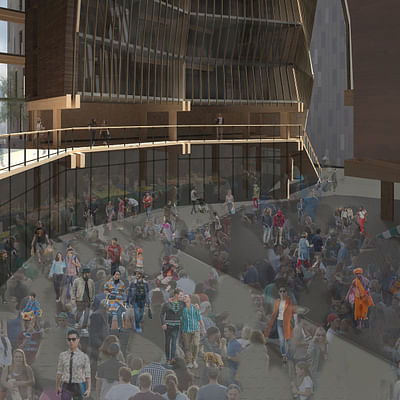

Share
0 Comments
Comment as :